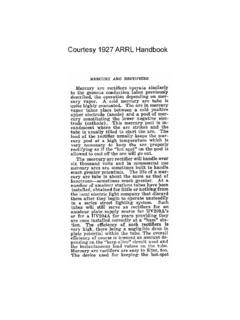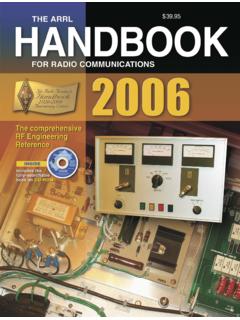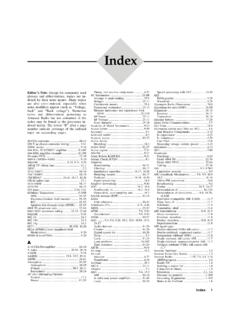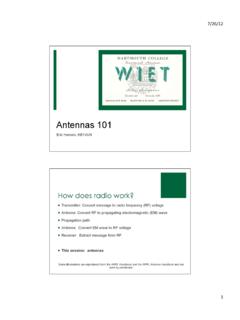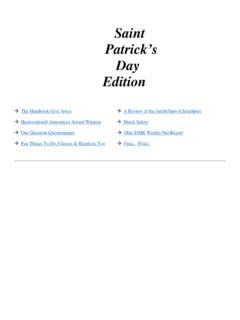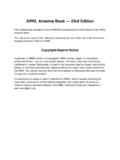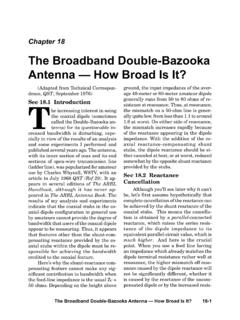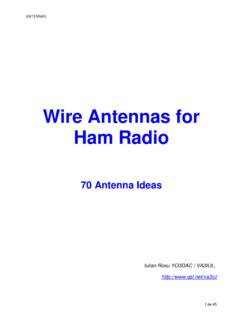Transcription of The High-Frequency Oscillator ARRL Handbook 1946
1 The High-Frequency Oscillator arrl Handbook 1946 Design considerations - Stability of the receiver is dependent chiefly upon the stability of the HF Oscillator , and particular care should be given this part of the receiver. The frequency of oscillation should be insensitive to changes in voltage, loading, and mechanical shock. Thermal effects (slow change in frequency because of tube or circuit heating) should be minimized. These ends can be attained by the use of good insulating materials and circuit components, suitable electrical design, and careful mechanical construction. In addition, the Oscillator must be capable of furnishing sufficient RF voltage and power for the particular mixer circuit chosen, at all frequencies within the range of the receiver, and its harmonic output should be as low as possible to reduce spurious response. It is desirable to make the L/C ratio in the Oscillator -tuned circuit low ( high -C), since this results in increased stability.
2 Particular care should be taken to insure that no part of the Oscillator circuit could vibrate mechanically. This calls for short leads and solid mechanical construction. The chassis and panel material should be heavy and rigid enough so that pressure on the tuning dial will not cause torsion and a shift in the frequency . Care in mechanical construction is well repaid by increased frequency stability. Circuits Several Oscillator circuits are shown in Fig. 723. The point at which output voltage is taken for the mixer is indicated in each case by X or Y. Circuits A and B will give about the same results, and require only one coil. However, in these two circuits the cathode is above ground potential for RF, which often is a cause of hum modulation of the Oscillator output at 14 MHz and higher frequencies when heater tubes are used. Hum usually is not bothersome with tubes, nor, of course, with tubes which are heated by direct current.
3 The circuit of Fig. 723-C overcomes hum, since the cathode is grounded. The two-coil arrangement is advantageous in construction, since the feedback adjustment (altering the number of turns on L2 or the coupling between L1 and L2) is simple mechanically. Besides the use of a fairly high C/L ratio in the tuned circuit, it is necessary to adjust the feedback to obtain optimum results. Too much feedback will cause the Oscillator to squeg, or operate at several frequencies simultaneously; too little feedback will cause the output to be low. In the tapped-coil circuits (A, B), the feed-back is increased by moving the tap toward the grid end of the coil; in C, by increasing the number of turns on L2 or by moving L2 closer to L1. The Oscillator plate voltage should be as low as is consistent with adequate output. Low plate voltage will cause reduced tube heating and thereby reduce frequency drift.
4 The Oscillator and mixer circuits should be well isolated, preferably by shielding, since coupling other than by the means intended may result in pulling. To avoid plate-voltage changes that may cause the Oscillator frequency to change, it is good practice to use a voltage-regulated plate supply employing a gaseous VR tube. -30.
